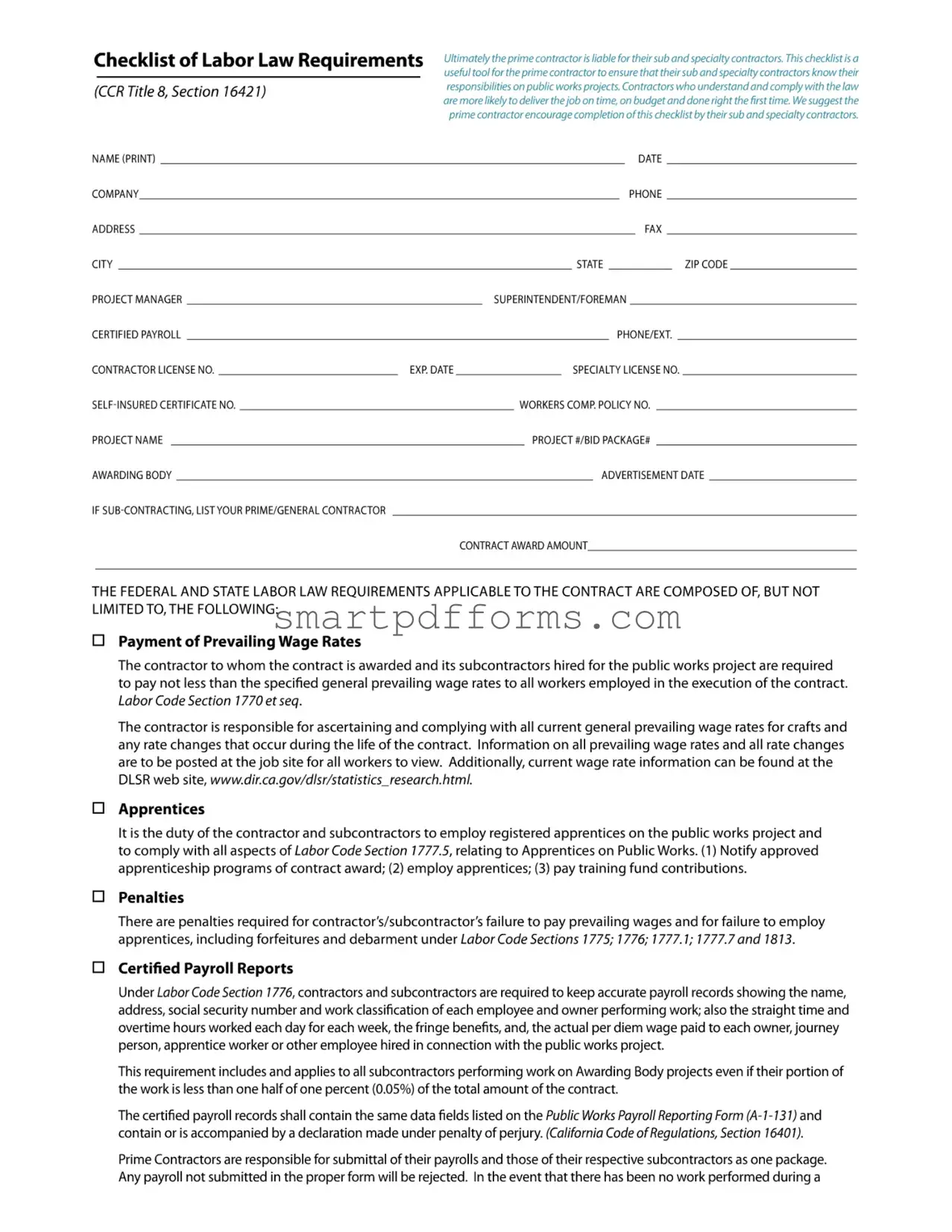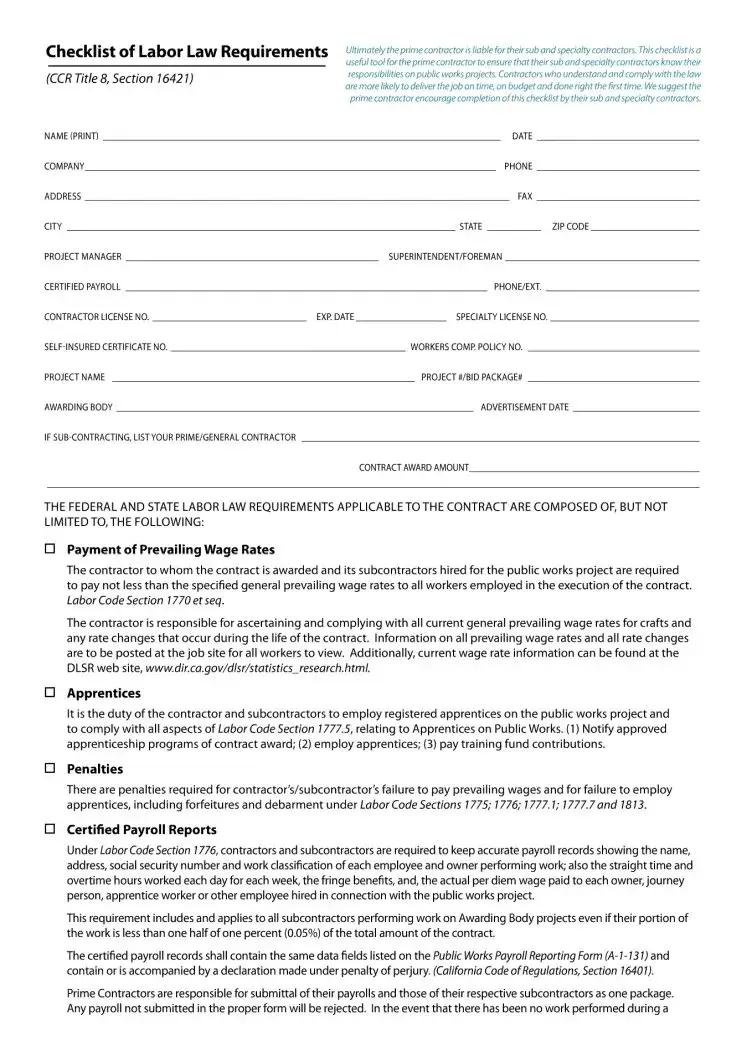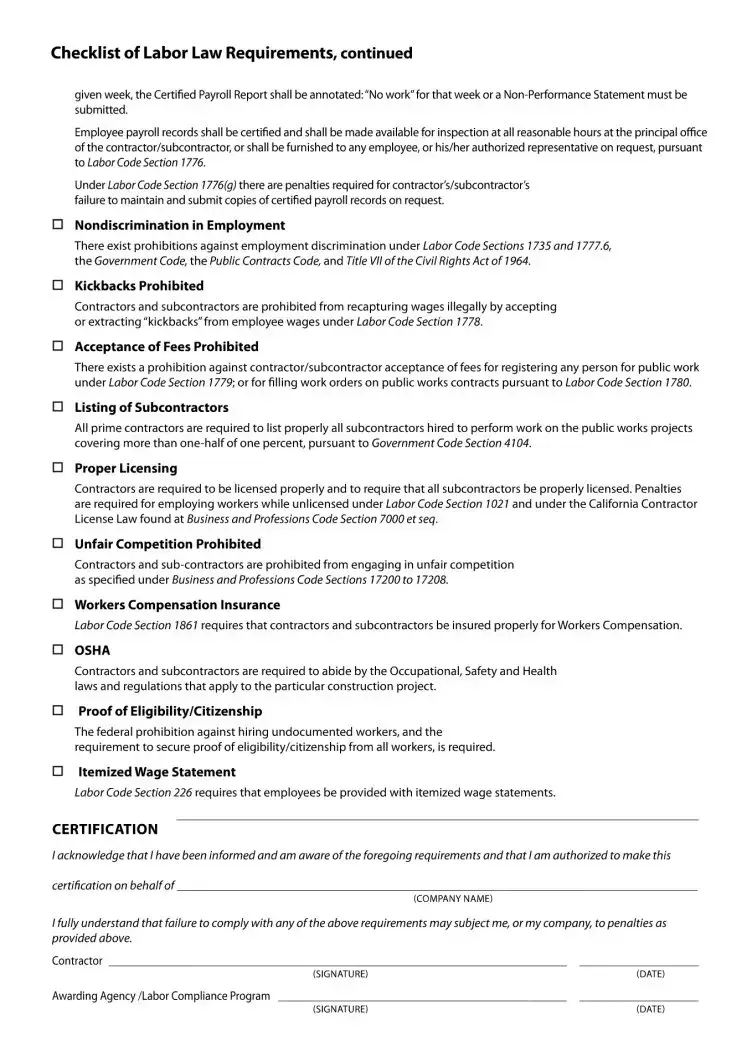Blank Checklist Labor Law PDF Template
The Checklist Labor Law form serves as a comprehensive guide for prime contractors to ensure compliance with both federal and state labor laws in public works projects. Highlighting key areas such as prevailing wage rates, apprentice employment, and the requirement for certified payroll reports, this form acts as a critical tool for contractors to adhere to legal standards and avoid penalties. Start filling out the form today by clicking the button below to ensure your compliance with labor laws.
Make This Document Now


